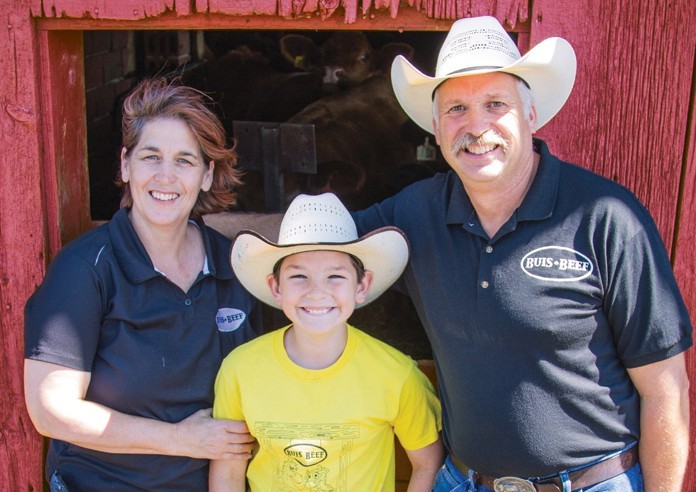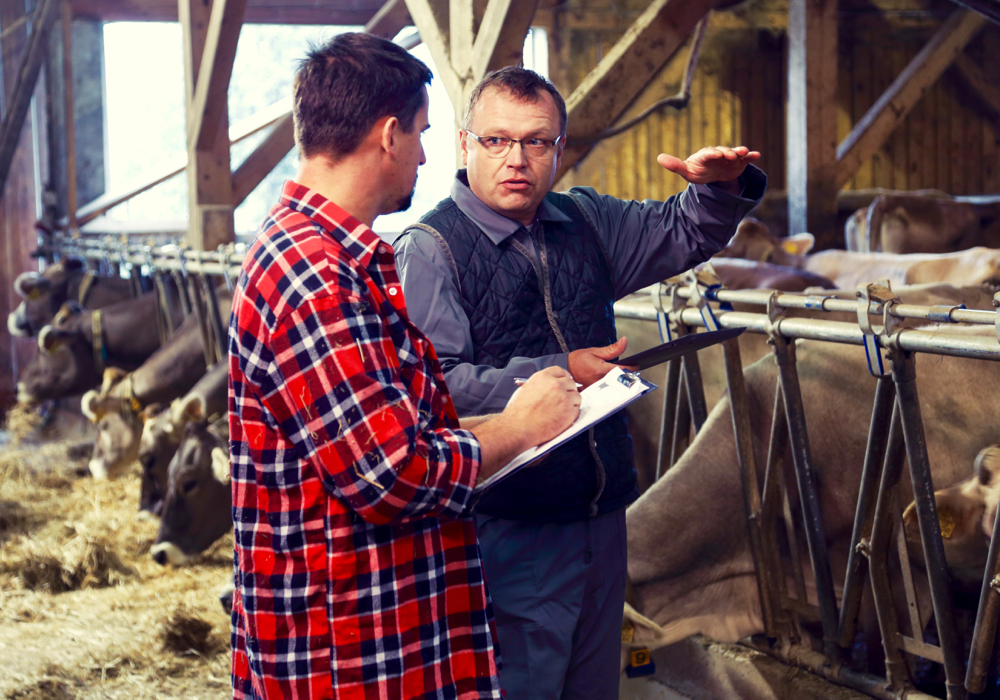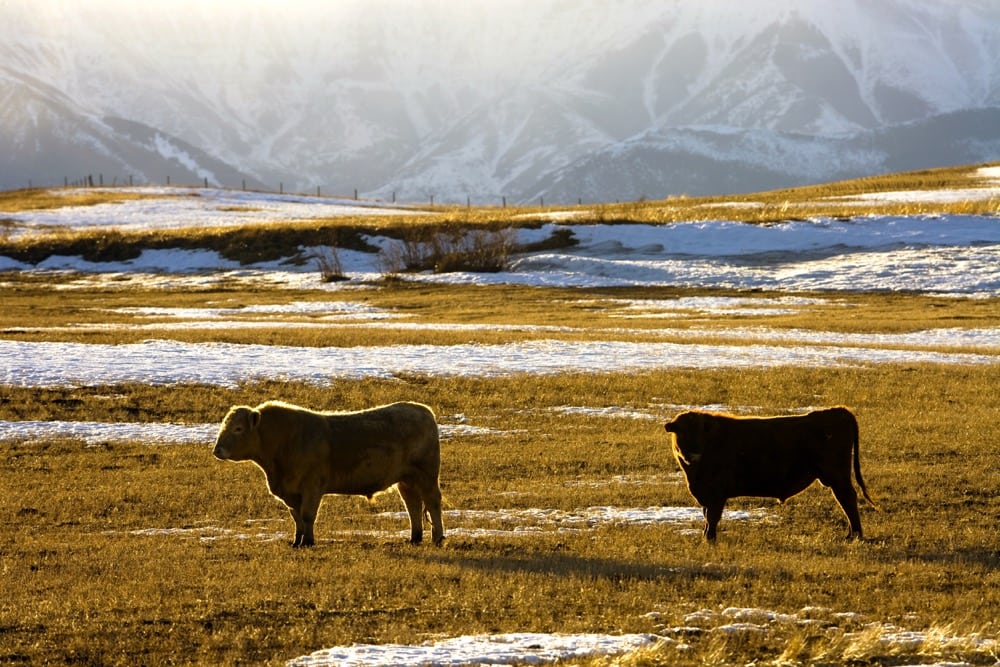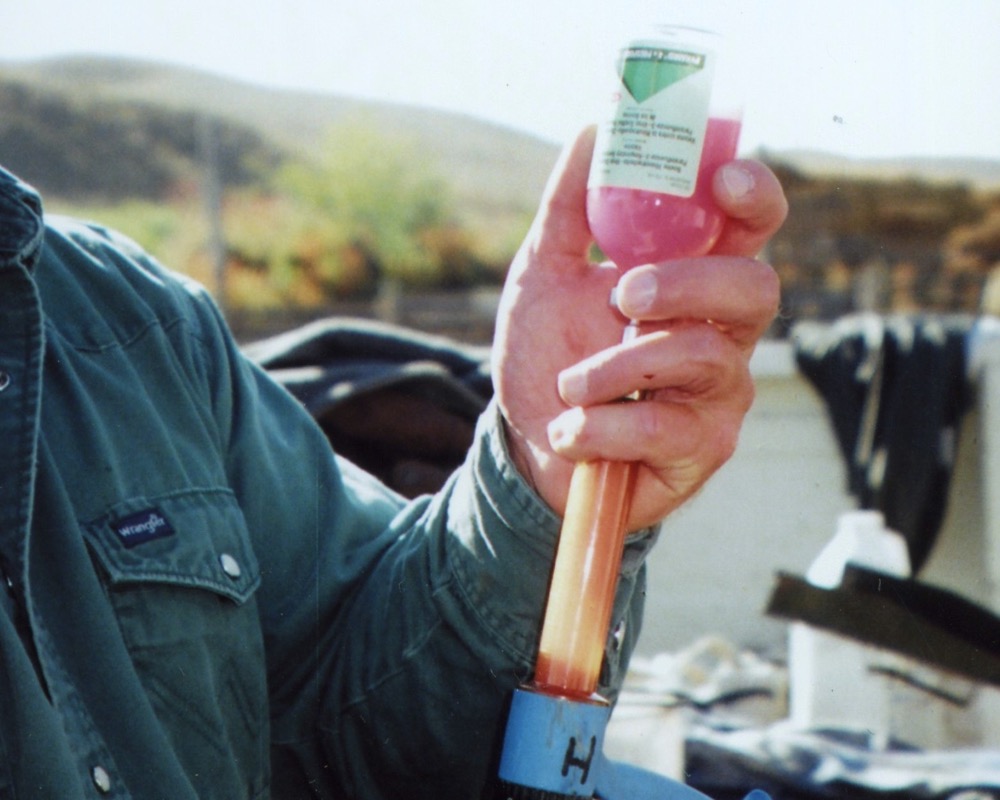Like most producers coming out of BSE, Joanne and Mike Buis knew they had to make changes to their feedlot operation. As third-generation farmers, the couple and their families have been raising beef in Chatham-Kent for over 75 years. Over the years, though, the operation has seen significant change.
“To make cow-calf work in this area is a bit of a challenge,” says Mike Buis. “We needed a system that would work as a whole system.
“When we started out we were strictly a feedlot and we’d been a feedlot for quite a few years. When BSE hit, we had to do something to stay in business. It just wasn’t going to work to continue with the feedlot the way we were doing it,” he continues. “We thought if we could at least raise our own calves then we could have the quality calves that we wanted and we could make everything work by being a little more vertically integrated.”
Read Also

Body condition, nutrition and vaccination for brood cows
One of the remarkable events of the past century related to ranching has been the genetic evolution of brood cows….
Mike and Joanne had never calved a cow in their life. “We started with 100 cows, put them in the feedlot pen and started calving,” says Buis. “Well, you can imagine how that went, trying to calve in a feedlot pen. It just wasn’t going to work.”
After some discussion, they decided to move the cows outside. “And then we went to the cover-crop grazing and calving in the field at the same time,” he says. “That’s the best of both worlds.”
Although they were happy with the way both the calving and the feedlot were going, they weren’t happy with the price they were getting for the quality cattle they were producing. “That’s when we opened up the store and started retailing on-farm,” he says.
Full-circle farming
Buis Beef raises 325 to 350 Red and Black Angus cows on 700 acres of land in Chatham-Kent. They’re one of the last cattle-raising families in the region, as land values are too high to justify using the acreage for grazing. Their system is a unique one, as they pasture-raise cattle through the winter, and keep them in a dry lot in the summer. Cows are naturally bred using Simmental bulls from Marywood Breeders Group in Ontario. The cows either have Western-based genetics or are from herds that have been raised in year-round outdoor conditions, which makes them ideal candidates for outdoor living during the sometimes harsh Canadian winters.
“We spend the money on good bulls,” says Buis. “We like their meat quality, and that’s where you can make the biggest change to the final product.”
The bulls they choose need to be easy calving, since nearly 100 per cent of their cows calve on their own. Calving, he says, is easier in the field, and over the years they’ve found that those born outside get a stronger start than those born in the barn.
The Buises grow some 700 acres of cash crop, including corn and soybeans, in a no-till/minimum-till system. Cover crops — for the most part, cereal rye and winter barley — are seeded in the fall and provide feed for the herd through the winter.
Currently, Buis Beef butchers an average of two cows per week, although sometimes as many as four. “Steaks obviously go quicker in the summer,” says Buis. “And roasts in the winter.”
Using ultrasound technology at finishing
How animals are selected for butchering is also a bit different. Mike and Joanne use ultrasound to determine the best marketing dates for their cattle. They also use it to select which animals will be sold on-farm and which will be sold on the market. In this way ultrasound not only helps them select the beef for their customers, it also reduces feeding costs and other inefficiencies.
The ultrasound measures carcass characteristics like rib-eye area, back-fat thickness and overall marbling. Based on the readings, a program calculates when the animal is at its peak. Feeding it beyond that point just produces excess fat, which reduces its value. Buis has been evaluating carcasses using the naked eye for a long time now. When he first implemented the ultrasound technology, he second-guessed it and made choices based on what he saw rather than what the system had calculated. He admits that he was wrong in doing that.
“It’s scary accurate,” he says. “Like if you predict an animal, say, 83 days from today, it is within a pound or two on carcass weight. It’s really, really accurate.”
“For us, it just makes sense. We know before we sell an animal where it should go, where we can get the maximum dollars for each animal,” he continues. “That’s valuable information.”
While some of the beef they raise is sold on-farm, the rest goes to VG Meats in Simcoe. Not only does VG Meats pay a premium on tenderness, they also discount on over-fat carcasses, making the ultrasound system useful in more ways than one.
“We don’t want to put the fat on. That’s where it costs you money. Once you get an animal finished, you’re wasting money feeding it longer, so why would we do it?” he asks. “We want to make sure that it’s finished. This is the best it’s going to be. Let’s send it out.”
Farm to freezer traceability
Part of what keeps Buis Beef’s customers coming back is its traceability system. The system, bioLinks, uses barcodes developed for an iPhone or iPod to manage inventory, pricing, and tracking sales. Using the management system in conjunction with bioLinks, beef can be traced to the farm where it was raised. It also tracks health records, tag numbers and an animal’s genetics. Buis says having a traceability system in place gives his customers peace of mind.
What’s next for Buis Beef?
To date, Buis says they’ve only used back-fat thickness and overall marbling from the ultrasound in the management of their operation. Now they are looking at ways to make use of the rib-eye data.
“If we can start to make the differentiation and pick those ones that have the nice, big rib-eyes, then we’ll have the answer,” he says. “We’re completely vertically integrated from birth to beef, so we can make decisions on the production side that will impact our retail end tremendously. It’s just a matter of being able to measure and to make decisions based on those measurements that makes the difference.”
Mike and Joanne Buis are winners of the 2010 Premier’s award for innovation. The couple has seven children ranging in age from 12 to 31. Their retail store is open Thursday to Saturday each week. For more information, visit buisbeef.ca.
















